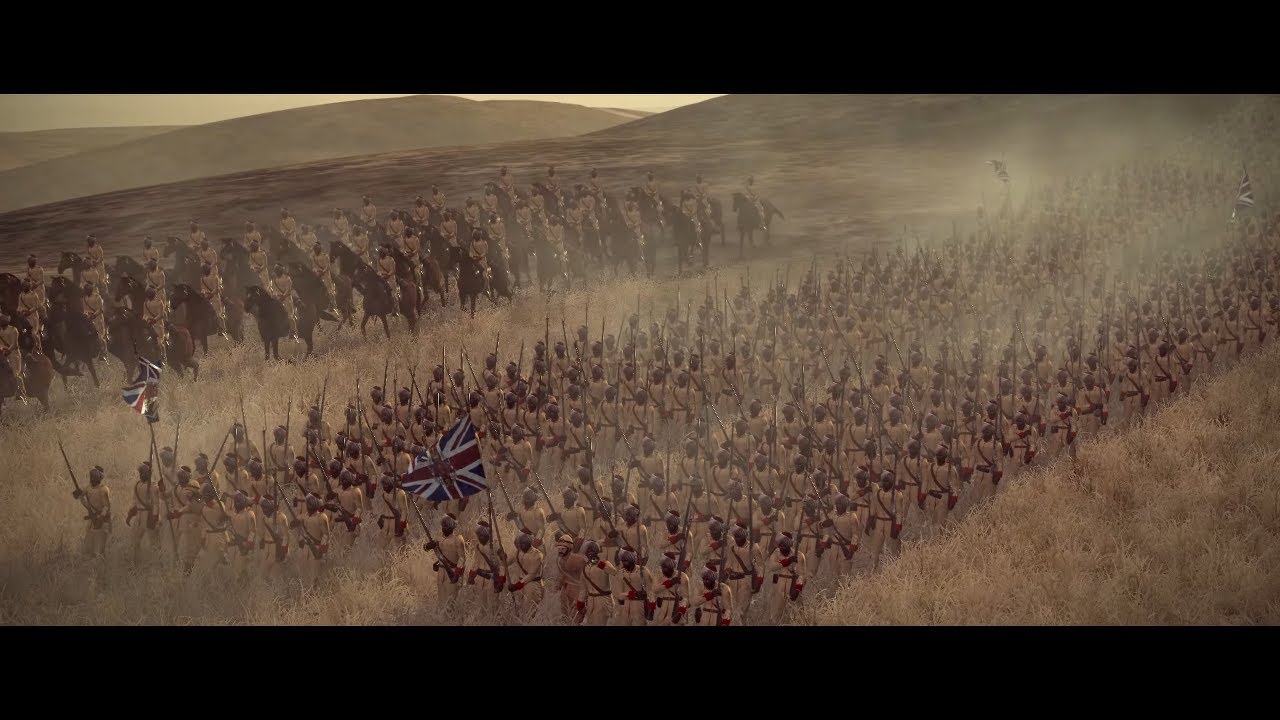The complex dynamics of the British Empire’s engagement with Afghan tribes during the late 19th century culminated in the significant battle of Kandahar, a defining conflict of the Second Anglo-Afghan War. This confrontation on September 1, 1880, saw British forces facing a formidable siege led by the Afghan commander Ayub Khan, following their earlier defeat at Maiwand. General Frederick Roberts, recognizing the urgency of the situation, orchestrated a rapid march from Kabul to relieve the besieged troops, effectively demonstrating the strategic military prowess of the British.
In this analysis, the events surrounding the Battle of Kandahar will be meticulously examined, focusing on the tactical maneuvers employed by both the British and Afghan forces. The aftermath of this decisive engagement not only marked a pivotal moment in the war but also significantly influenced British policy toward Afghanistan in subsequent years, leading to a more cautious approach in its imperial endeavors. Furthermore, the implications for Afghan leadership under Abdur Rahman Khan will also be explored, highlighting the enduring ramifications of the conflict.
Historical Context of the Second Anglo-Afghan War
Overview of British Imperialism in the 19th Century
During the 19th century, the British Empire was at the zenith of its power, fueled by the industrial revolution and driven by the imperative to expand its territories across Asia, Africa, and the Americas. You witness the British imperialists engaging in fervent territorial conquests, spurred not just by the thirst for resources but by the broader ambition to combat rival powers, particularly Russia in what was known as the “Great Game.” Afghanistan, positioned geostrategically between British India and Russian territories, became a focal point in this imperial pursuit. The push to dominate Afghanistan was as much about securing trade routes as it was about containing potential threats from rival empires. This atmosphere of relentless expansion and heightened political tension framed the initial steps into the Second Anglo-Afghan War.
Initial Causes of the Second Anglo-Afghan War
The seeds of the Second Anglo-Afghan War (1878-1880) were sown in the British desire to maintain influence in Afghanistan after a series of diplomatic missteps and the disastrous First Anglo-Afghan War (1839-1842), where a British force had suffered catastrophic losses. In your analysis, it becomes clear that the immediate cause of the war was the British apprehension following the exclusion of their diplomatic representatives from Kabul under the Amir Sher Ali Khan’s regime. Additionally, the growing influence of Russia in Central Asia created an existential fear in British policymakers, prompting them to take pre-emptive action to ensure Afghanistan did not become a Russian satellite state.
Geopolitical Significance of Afghanistan
Afghanistan’s geopolitical significance extended beyond mere territorial considerations; it had immense strategic ramifications for British India and national security. As you delve deeper, you recognize that controlling Afghanistan meant safeguarding British interests in India, especially against a backdrop of increasing Russian territorial ambitions. The British envisioned Afghanistan as a buffer state, crucial in protecting not only the subcontinent but also the lucrative trade routes leading into Central Asia. This understanding of Afghanistan’s importance profoundly affected subsequent military engagements and policies toward the region, culminating in the conflicts that followed in the late 19th century.
Prelude to the Battle of Kandahar
The Defeat at Maiwand
Before the fateful encounter at Kandahar, the British forces experienced a stinging defeat at Maiwand in July 1880. The British troops, unprepared for the fierce guerrilla warfare tactics employed by Afghan forces led by Ayub Khan, faced significant casualties that severely impacted British morale. As you analyze this defeat, you observe it serves as a pivotal moment that not only altered the course of the war but also defined the political dynamics within Afghanistan, where Ayub Khan’s stature and leadership grew tremendously in the wake of this British loss.
Strategic Importance of Kandahar
The southern Afghan city of Kandahar was of paramount importance not only due to its historical significance as a center of trade and military logistics but also because it was a principal bastion for British forces in the region. In your assessment, you note that the control of Kandahar was crucial for securing supply lines and as a staging ground for further military operations. Following the disaster at Maiwand, Kandahar became an even more vital stronghold for the British forces, leading to an urgent need to lift the siege orchestrated by Ayub Khan.
Ayub Khan’s Rise and Objectives
Rising in prominence amidst the chaotic backdrop of the war, Ayub Khan positioned himself as a formidable opponent to British aggression in Afghanistan. His objectives, driven by a nationalist aspiration to expel foreign influence and restore Afghan sovereignty, marked a significant challenge to British imperial aspirations. You can see that Ayub’s leadership was characterized by a blend of traditional Afghan values and modern military strategies, making him an influential figure not only in the context of this particular war but also in shaping Afghan national identity.

The Siege of Kandahar
Conditions Within the Garrison
As the siege lingered, the conditions within Kandahar became increasingly dire. You would observe that while the British garrison, led by Major-General Brocklehurst, had fortified positions, the limited resources, and rising tensions created a precarious situation. Soldiers and civilians alike faced shortages of food and adequate medical supplies, which stymied morale and fostered a pervasive sense of desperation. The desperate conditions became a clarion reminder of the dire stakes involved for the British empire in this conflict.
Civilian and Military Struggles Under Siege
The siege created a unique challenge as civilians were intertwined with military operations. You recognize that the presence of non-combatants in Kandahar added layers of complexity to the British response. Soldiers were not just fighting for their lives but were also protecting families that had sought refuge within the garrison. This duality of struggle, where the military and civilian experiences coalesced, painted a broader picture of the impact of war on society, illustrating how the ramifications of geopolitical conflicts reverberate through all layers of life.
British Morale and Leadership
Despite the untenable conditions, British leadership aimed to maintain morale within the beleaguered ranks. You can see that leaders like Major-General Brocklehurst strove to inspire their troops through various means, from maintaining discipline to emphasizing the critical nature of their mission. Yet, underneath this facade of resilience, there was an undeniable strain and uncertainty permeating the troops amid the prolonged siege. The dynamics of authority, morale, and military effectiveness intertwined in such a way that your understanding of the leadership challenges within the garrison deepens.
Leadership and Strategy of the British Forces
General Frederick Roberts: Background and Strategy
In response to the crises unfolding in Afghanistan, General Frederick Roberts emerged as a key figure due to his military acumen and understanding of the political landscape. You take note of Roberts’ prior experience in the region, which informed his strategic decisions. He recognized the necessity for rapid response and coordination, believing that swift movement would catch the Afghan forces off guard. His strategic foresight and ability to adapt to the changing dynamics of warfare would become pivotal in shaping the eventual outcome of the conflict.
Composition of the British Relief Force
As you assess the logistical aspects, it becomes apparent that the composition of Roberts’ relief force, comprising approximately 10,000 troops, was critical to the success of the operation. This diverse assembly of seasoned soldiers from various regiments, including infantry, cavalry, and artillery, allowed for flexible command structures and combined arms strategies. The unique blend of experience and specialization among the troops under Roberts’ command showcased the adaptability and resilience of British military forces once mobilized effectively.
British Military Tactics and Innovations
The British employed a variety of tactical innovations in their engagement with the Afghan forces. You find that the use of superior artillery, alongside well-coordinated infantry maneuvers, allowed them to capitalize on their technological advantage. The integration of new military technologies such as breech-loading rifles transformed their combat effectiveness. Alongside this, Roberts emphasized localized intelligence from Afghan allies to inform his tactical decisions, showcasing a blend of traditional military practice with innovative strategies unique to the conflict.

Ayub Khan’s Afghan Forces
Organizational Structure of Afghan Forces
The Afghan army under the leadership of Ayub Khan was characterized by its decentralized structure, comprising a collection of tribal militias rather than a conventional army. As you study this organization, it becomes evident that the diverse factions within Ayub’s command often had interests that diverged, complicating unified military action. This fragmentation, in conjunction with tribal loyalties, would ultimately pose challenges to cohesive strategy, impacting the overall operational effectiveness against a more organized British force.
Ayub Khan’s Tactical Approaches
Ayub Khan’s tactical approaches blended traditional Afghan warfare with adaptive strategies that sought to exploit vulnerabilities in British operations. You observe that guerrilla tactics were a hallmark of his military philosophy, allowing him to leverage the terrain to offset his numerical inferiority. By utilizing ambushes and hit-and-run strategies, Ayub aimed to wear down British forces while galvanizing popular support among the Afghans for their cause. This tactical ingenuity reflected his deep understanding of both the terrain and the psychological dimensions of warfare.
Challenges Faced by Afghan Forces
Despite Ayub Khan’s strong leadership and tactical prowess, his forces faced significant challenges on multiple fronts. A lack of sufficient resources, logistical coordination, and internal dissent hampered their ability to mount a sustained resistance against the British forces. You note that while the Afghan forces exhibited bravery and tactical agility, the technological disadvantages, coupled with supply chain issues, rendered their situation precarious, highlighting the broader implications of military preparedness in asymmetric conflicts.
The March to Kandahar
Logistics of the 320-Mile March
The logistical considerations of the 320-mile march from Kabul to Kandahar presented substantial challenges to General Roberts and his forces. As you delve into this operation, you recognize the fortitude required to traverse the rugged terrain under the pressing threat of Afghan attacks. Planning for adequate supplies, munitions, and reinforcements was of the utmost importance. This logistical precision underscored the complexity of military planning in such environments, revealing how effective execution of these plans became foundational for subsequent engagements.
Encountering Obstacles on the Way
As you follow the journey, you see that the British relief force encountered numerous natural and human obstacles along their route. Harsh weather conditions, treacherous terrain, and potential ambushes by Afghan scouts tested their resolve and adaptability. Each encounter shaped the collective psyche of the troops, fostering a spirit of unity in overcoming adversities that would ultimately inform their performance at Kandahar. The need for operational flexibility inflected every aspect of this march, underscoring the unpredictability of military campaigns.
Role of Local Collaborators
You find the role of local collaborators vital in augmenting the relief force’s capabilities. The support from certain Afghan tribes and local communities who were sympathetic to the British cause provided essential intelligence and logistical assistance, allowing them to navigate the complex social fabric of Afghan society. This complex interplay of alliances highlighted the multifaceted dimensions of imperial warfare, emphasizing that military success was often dependent not solely on direct combat but also on the intricate relationships forged with local populations.

The Battle Begins
Tactics and Preparations by the British
As the battle commenced on September 1, 1880, the British approach reflected meticulous preparation that had been shaped by the lessons learned from previous engagements. You note that Roberts implemented superior defensive tactics, leveraging artillery placements to dominate key strategic vantage points while maintaining flexibility in troop deployments. This careful orchestration of military assets defined the operational philosophy underpinning the British strategy as they re-entered the fray.
Initial Engagements and Strikes
Initially, British forces executed a series of calculated strikes against Ayub Khan’s positions, targeting weaknesses in his deployed formations. You can see that these early engagements were characterized by strategic artillery bombardments and coordinated infantry assaults, aimed at sapping the will of Afghan forces while simultaneously attempting to seize the initiative. Roberts’ tactics successfully disrupted Ayub Khan’s command structure, preventing a coherent response to the British maneuvering.
The Role of Artillery in the Battle
Artillery played a decisive role as the British forces unleashed a relentless barrage on Afghan positions. You observe that the innovative use of field artillery, including the new breech-loading models, enabled the British to effectively fire at a greater range and with heightened accuracy. The integration of artillery with infantry movements showcased tactical innovation, obliterating Afghan defenses and amplifying the psychological impact on Ayub Khan’s forces as they found themselves outmatched.
Combat and Key Engagements
The Bombardment of Strategic Positions
As the battle unfolded, British forces systematically targeted key strategic positions held by the Afghans. You recognize that this methodical approach to bombardment not only neutralized immediate threats but also served to demoralize the Afghan fighters. Each strike dismantled the cohesion of Ayub Khan’s forces, showcasing the effectiveness of British tactical superiority while also emphasizing the psychological warfare inherent in the engagement.
Fighting for Control of Villages
The engagement extended beyond broad military maneuvers into more intimate, violent contests for control of critical villages that surrounded Kandahar. You can appreciate that the contest for these village strongholds epitomized the struggle for legitimacy and control in warfare. Each village represented not just a tactical objective but an embodiment of community and tribal allegiance, making the stakes of these encounters palpably felt by the soldiers on the ground and civilians caught in the crossfire.
Critical Moments Leading to British Advancement
As the conflict progressed, you identify several critical moments that precipitated the British advancement. Instances of miscommunication among Afghan leaders, along with timely troop reinforcements from British forces, created openings that Roberts masterfully exploited. You highlight how these turning points underscored the importance of leadership and decisiveness amid the chaos of battle, ultimately leading to the unwinding of Afghan resistance.
Turning Points in the Battle
Decline of Afghan Morale
As the fighting escalated and the British demonstrated their superior fighting capabilities, the morale among Ayub Khan’s forces began to wane. You see that this decline was exacerbated by mismanagement, dwindling supplies, and growing anxiety about the potential outcomes of the engagement. As hope faded, the unity among Afghan troops started to unravel, allowing the British to capitalize on their momentum.
The Break of Afghan Defenses
A series of calculated British assaults ultimately led to the break of Afghan defenses. You notice the pivotal nature of these moments as a culmination of strategic planning and effective execution combined with the psychological toll the ongoing siege had taken on the Afghan forces. The erosion of morale turned into a tangible fracture within their lines, leading many Afghan fighters to consider withdrawal rather than face further losses.
The British Counteroffensive
Taking advantage of the Afghan disarray, the British commenced a powerful counteroffensive that rolled back the remnants of Ayub Khan’s army. As you analyze the nature of this counteroffensive, it becomes apparent that the coordination among British units allowed for a concentrated thrust that effectively dismantled any remaining organized resistance. The culmination of well-planned tactics, well-timed maneuvers, and a resolute fighting spirit combined to alter the trajectory of the battle dramatically.
Conclusion
Summary of the Battle’s Significance
The conclusion of the Battle of Kandahar marks a decisive end to the Second Anglo-Afghan War, cementing British military prestige while simultaneously shaping the future of Afghanistan. As you reflect on the events, you see that the battle transcends mere military strategy, embodying the complexities of imperial engagement in the region. The British victory, while temporarily uplifting for the empire, laid bare the deep-rooted conflicts that would persist long after the cannon smoke faded.
Reflections on British Imperial Policy in Afghanistan
In the aftermath of Kandahar, British policy in Afghanistan underwent a critical reevaluation. You recognize that the successes and failures of the Second Anglo-Afghan War prompted a more cautious imperial strategy, aimed at avoiding the costly entanglements of previous conflicts. The emergence of Abdur Rahman Khan as a pro-British leader illustrated the intricate dance of power dynamics the British had to navigate, revealing the delicate balance of influence they sought to maintain moving forward.
Continued Relevance of the Historical Narrative
Ultimately, the historical narrative surrounding the Second Anglo-Afghan War and the Battle of Kandahar remains relevant today as echoes of imperial strategy continue to influence contemporary geopolitical relations in the region. Your engagement with these historical events illuminates the complexities facing empires in their quest for dominance and the accompanying societal consequences. As you reflect on this narrative, you recognize that the lessons of the past can guide your understanding of modern conflicts, revealing the cyclical nature of power, resistance, and the thirst for sovereignty.
